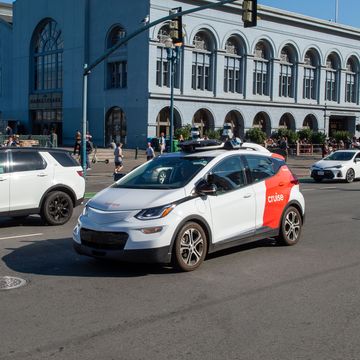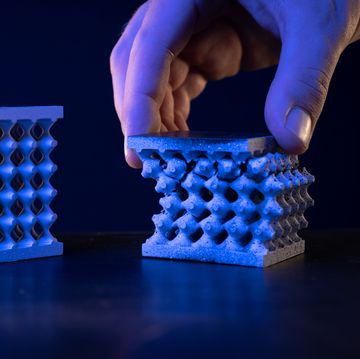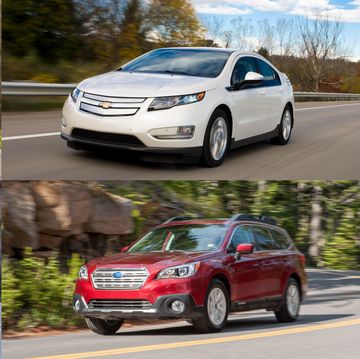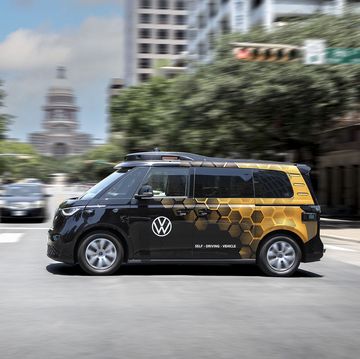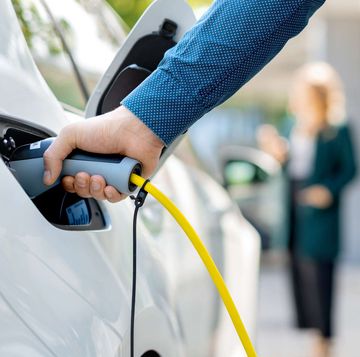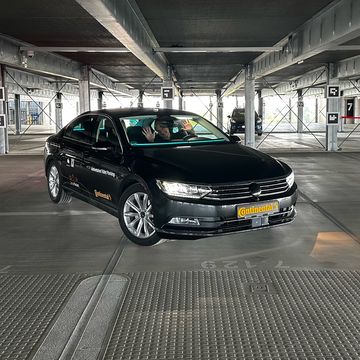- Harman International says drivers will soon be able to get premium audio features that can be downloaded over the air whenever the consumer can afford them, rather than requiring buyers to purchase a top-of-the-line audio system up front.
- The service could be offered via subscription, says Harman, which means it could travel with the user from vehicle to vehicle.
- Others are looking at customizing the sound landscape by using smaller speakers that can work together harmoniously.
Harman’s Ready on Demand, displayed at CES, is designed to end once-and-for-all the idea of consumers choosing a static infotainment option at the dealership, and then being stuck with it forever. Instead, the future is likely to include premium audio features that can be downloaded over the air whenever the consumer can afford them.
Armin Prommersberger, senior vice president, Automotive Product Management at Harman International, credits Tesla—which pioneered over-the-air updates—with thinking like a software company, not an automotive OEM. “The whole industry was aware of over-the-air updates but didn’t do anything with them,” he told Autoweek. “Instead, every couple of years they’d offer a new updated system, and a smaller update once a year. But as a consumer with a smart phone, you expect to get updates all the time, and to be able to download features and apps onto the phone’s blank canvas.”
One of the “pain points,” says Harman, is “budget constraints at the time of purchase that hinder the ability to get all desired features.” The company claims it has the only product on the market that is deeply embedded in the in-vehicle infotainment system and can enable premium audio via a software platform that can be extended with new apps.
The service, which could be offered via subscription, might be used to provide “auto experiences” that could travel with the user from vehicle to vehicle, or to create “virtual environments” like particular concert hall ambience that will enhance the music-listening experience.
“Our software lives on top of the hardware and can play nicely with different hardware configurations,” Prommersberger said. And the company is thinking of hardware’s future also. Instead of, say, installing an amp that operates at half power until it is upgraded, Harman is talking about main controller hardware living in the trunk that can be slid out and replaced with a couple of quick connections. Speaker plug-ins could possibly be managed the same way. Speakers could also be pre-installed and only activated with software, though that doesn’t appear to be on the table currently.
Sam Abuelsamid, principal analyst for e-mobility at Guidehouse Insights, told Autoweek, “I think these are features that customers might be willing to pay for to get an improved in-cabin experience, although I’m not so sure the subscription model will work. A lot will depend on pricing and specific features that are being offered. Things like adding spatial audio or having the digital sound processing recreate the sound of different concert venues might appeal to some customers. Not having to pay for those features if you don’t want them is also appealing. Unlike something like heated seats, where you have to build in more hardware, the processing chips are going to be there for basic functions anyway. You’re just paying for an app that uses the hardware in a different way.”
Sweden’s Dirac works with 18 automakers (fielding 70 current models) on optimizing the sound landscape in their cars. “If we know the acoustic fingerprint of the car and the target to be achieved, we can make the speakers work together harmoniously,” said Rüdiger Fleischer, automotive product manager at Dirac. “It’s an algorithm based on complex mathematical models.” One advantage for automakers is that once the car’s information is input, Dirac can let the company’s valuable prototype go instead of tying it up for weeks.
Fleischer said that simply adding additional speakers—the automakers’ traditional go-to for establishing a premium sound system—doesn’t necessarily enhance the offering. “More speakers can mean more interference,” he said. Also at CES, Panasonic showed new speaker designs for EVs that it said drastically reduces the number and size of speakers needed for optimal sound. According to Panasonic Automotive Chief Technology Officer Andrew Poliak, “With 2.5-inch speakers in the dash, we can get the same sound experience you’d get from larger speakers. In an EV that can eliminate the need for bulky six-inch speakers in the doors, and help reduce weight. The result is greater range.”
Lars Carlsson, head of automotive business development at Dirac, said that cars have “super computers in their dashboards,” with the processing power to be able to add additional over-the-air experiences through software downloads. “We look at what can be done with hardware on fixed systems, enhancing the listening experience via pre-arranged software that is ready to be activated,” he said.
Fleischer said the upgrades could be paid for with a one-time payment, or a monthly or annual fee. If the consumer stops paying, he said, “The basic settings will always be there.”
The technology appears to be available. It’s the industry’s job to come up with compelling over-the-air products that consumers would be willing to pay real money to obtain. That part of it looks embryonic right now.
Jim Motavalli is an auto writer and author (nine books) who contributes to Autoweek and Barron’s Penta. He has written two books on electric cars, Forward Drive (2000) and High Voltage (2010), and hosts the Plugging In podcast.
Motavalli’s writing has appeared in the New York Times, CBS Moneywatch, Car Talk at NPR, Forbes, US News and World Report, Sierra Magazine, Audubon, and many more. In his spare time, he reviews books and jazz.



